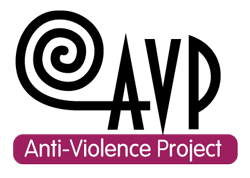Myths and Realities
There are many myths about sexualized violence and gender-based violence that circulate in our society through pop culture, media, and everyday beliefs. These myths reinforce stereotypes and contribute to a general climate of violence.
It can be useful to think about the “social functions” that myths provide, in order to understand their power. For some people, believing in myths about sexualized or gender-based violence allows them to feel safe: it helps them to believe that this violence does not happen very often or that it only happens to certain “kinds” of people. Myths can allow people to maintain a belief that we live in a “just” world, by suggesting that people can protect themselves from violence by not doing certain things or going certain places.
Myths also inform society about who is considered worthy of protection from violence and who is not, by placing blame on people who have experienced harm, by suggesting that the violence they’ve experienced is their fault, that they could have or should have done something to prevent the violence from occurring, or by minimizing the impacts of violence.
Ultimately, myths about violence maintain silence and protect people who cause harm and institutions who fail to respond to violence. Myths can make someone who has experienced violence feel isolated, wrong, unsure, or unworthy and therefore can prevent people from accessing support, reporting violence, or speaking up in the face of violence. Myths maintain a culture of violence and place responsibility for violence on the people who have experienced it, instead of those who enact it.
Myths also normalize oppression and inequality and therefore erase the wider social responsibility that society has to challenge these myths and end this violence. For example, more often than not, who is seen as deserving of freedom from violence is distinguished along gender, race and class lines (divisions of power, who has power and privilege and who does not). Normalization of this myth allows government, institutions, and individuals to ignore the systemic roots of these inequalities.
Myths are dangerous, damaging, and dehumanizing. Much of our prevention work seeks to dispel myths and educate people about the realities of sexualized and gender-based violence as well as other forms of violence and shift the way that society thinks about who is deserving of freedom from violence. Everyone deserves to live free from violence.
